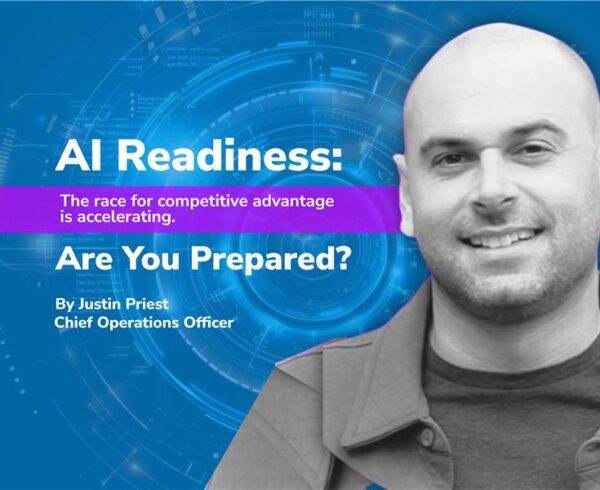IT leaders are caught in a bind. Demand for digital transformation is accelerating while access to technical talent is contracting. Budgets are under scrutiny. Timelines are compressing. And recent policy shifts have made that tension impossible to ignore.
A recent CIO article finally spotlights what forward-thinking technology leaders have known for years: the way we think about where work gets done is fundamentally changing. This isn’t about politics or paperwork. It’s about measurable outcomes, delivery velocity, and the ability to innovate without interruption.
With H-1B sponsorship costs now reaching $100,000 per petition and processing timelines stretching six to twelve months, U.S. organizations are asking a straightforward question: Why build talent strategies around relocation when execution depends on speed?
The Real Cost of Waiting
That $100,000 figure represents more than filing fees. It includes legal costs, compliance overhead, processing delays, and the opportunity cost of keeping critical roles unfilled while waiting for approvals. For an organization sponsoring ten engineers, that’s a million dollars before a single line of code is written. And even after approval, there’s no guarantee of retention. The model was built for a different era of technology execution.
The traditional response has been to stretch budgets in major U.S. metros or compromise on skill requirements. Both approaches create risk. Overpaying in saturated markets doesn’t guarantee better outcomes. Hiring underqualified teams to meet deadlines doesn’t improve delivery quality. And offshore models that operate across 10-hour time differences slow the decision cycles that modern IT depends on.
What Successful CIOs Are Doing Differently
The technology leaders gaining ground aren’t waiting for the talent market to correct itself. They’re redesigning how work gets distributed across their organizations. They’ve moved from location-based staffing to capability-based workforce architecture. The question isn’t where can we find people? It’s where can this work be delivered most effectively?
That shift has brought LATAM to the center of enterprise IT strategy. With more than 2 million STEM-trained professionals, time zone alignment with U.S. business hours, and a mature technology ecosystem, the region has become a performance multiplier for organizations that need to maintain velocity without compromising quality.
Here’s what separates LATAM nearshore from earlier sourcing models: it’s not offshore with better geography. Engineers across the region are contributing directly to cloud modernization, regulated industry solutions, and secure infrastructure delivery. Universities and employers have invested heavily in advanced certifications, agile practices, and architecture disciplines aligned with U.S. enterprise standards. The talent exists. The infrastructure is proven. The execution model works.
Why Proximity Still Matters
The advantage isn’t just about time zones. It’s about preserving the rhythm of collaboration that keeps transformation moving. When engineering teams operate in the same business day as product owners, architects, and stakeholders, decisions don’t wait. Questions get answered. Approvals happen. Problems get resolved before they compound.
That rhythm directly impacts what IT leaders care about most: how quickly technology initiatives turn into business results. Real-time iteration means faster releases. Communication clarity reduces rework. Shifting priorities get addressed without losing momentum to handoffs. Customer-impacting incidents resolve faster because support and development collaborate simultaneously.
Simply adding more engineers doesn’t guarantee progress. What accelerates execution is alignment. Nearshore delivery preserves that alignment while giving CIOs access to talent that would be cost-prohibitive or unavailable domestically.
What We’re Seeing Work
At ConsultNet, we’re watching this evolution unfold in real time. The organizations moving fastest aren’t treating nearshore as a pilot program. They’re embedding it as a core execution layer. Strategic leadership stays close to the business so priorities translate clearly into technology requirements. Nearshore engineering becomes the delivery engine that maintains collaboration and velocity. Specialized global resources supplement where niche capabilities or extended support add value.
This architecture does more than reduce costs. It strengthens resilience. It improves delivery predictability. And it ensures that technology execution keeps pace with the organization’s ambition for growth.
One pattern we’ve observed: the CIOs who succeed with nearshore don’t treat it as a vendor relationship. They treat it as workforce design. They invest in integration, align on practices and expectations while committing to the partnership the same way they would with internal teams. That commitment shows up in outcomes—shorter delivery cycles, higher productivity, greater confidence in system stability.
The Window Is Narrowing
Here’s what most articles on this topic won’t tell you: access to top-tier nearshore talent is becoming competitive. As more organizations recognize what LATAM engineering teams deliver, demand is outpacing supply in certain skill areas. The CIOs who move strategically now will secure the talent they need for the next phase of growth. Those who wait will find themselves in the same bidding wars they’re experiencing domestically, just in a different market.
The H-1B policy shift isn’t the reason to explore nearshore. It’s the catalyst that’s forcing a conversation many IT leaders should have started years ago. The U.S. domestic talent market alone cannot support the acceleration expected of today’s technology organizations. Nearshore delivery gives CIOs the ability to maintain control, protect velocity, and build committed teams that support continuous modernization without delay.
What Comes Next
The question isn’t whether nearshore will be part of your workforce strategy. It’s whether you’ll architect it strategically or adopt it reactively. The organizations that design for agility now will be the ones leading what comes next.
If your technology organization is reassessing how to secure the talent needed to deliver at speed, I welcome the conversation. My team and I are helping IT leaders build nearshore delivery models that strengthen execution and reduce risk. We’re always happy to share what’s working in the current talent landscape.






